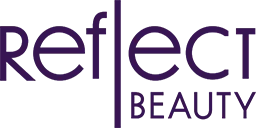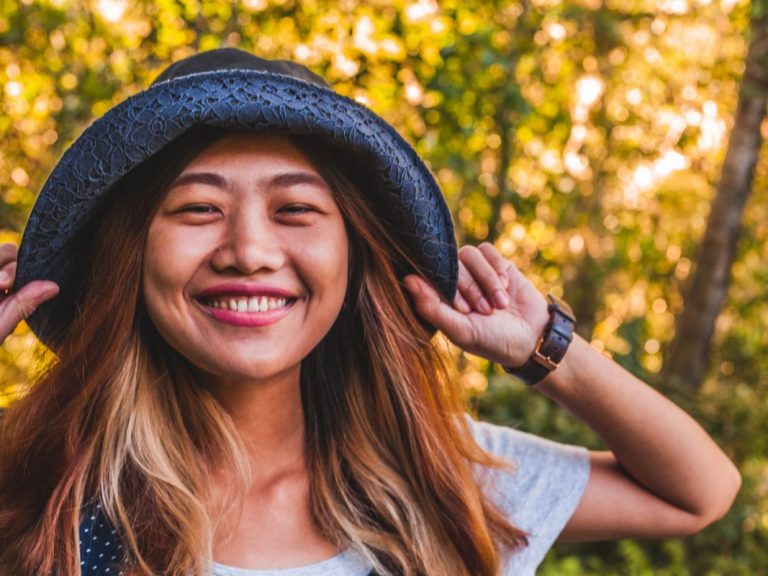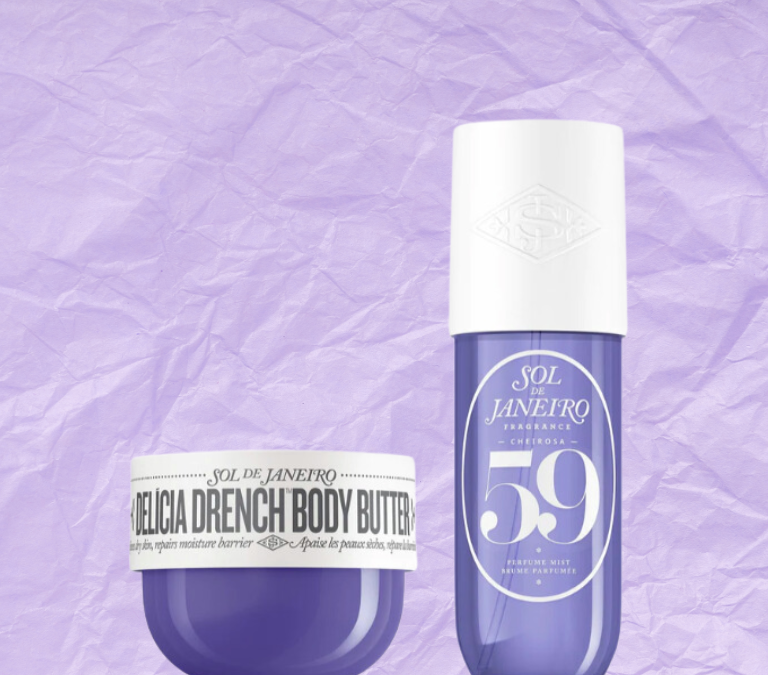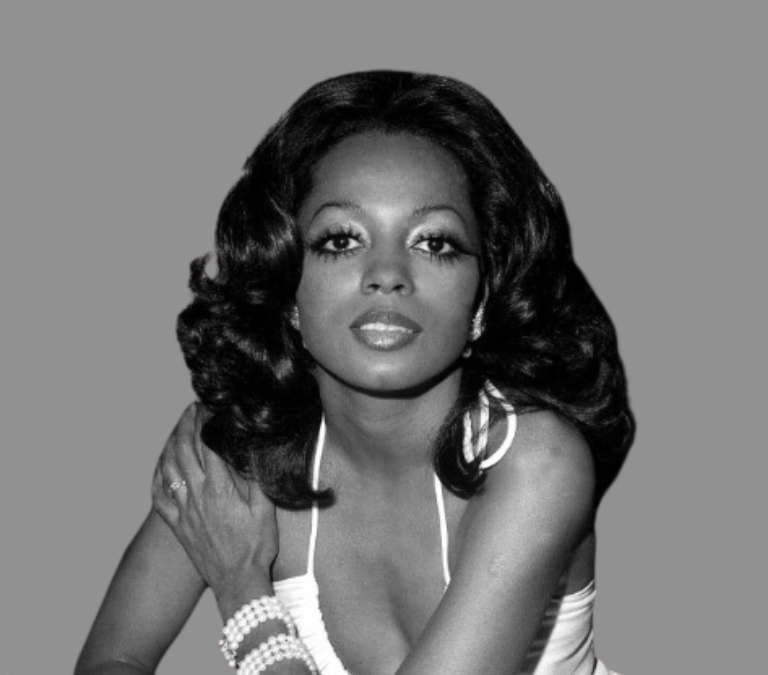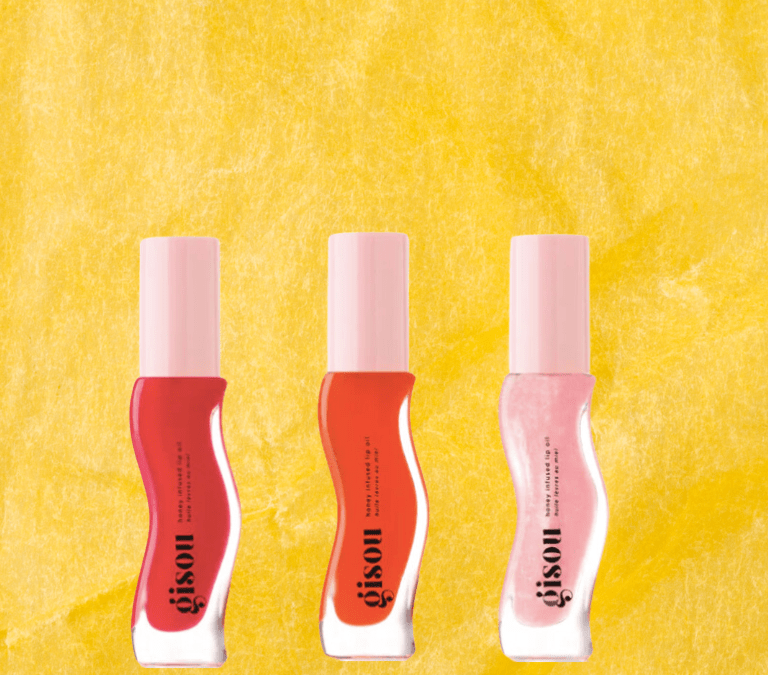By Jude Chao of FiftyShadesofSnail.com
The great thing about Asian skincare is how customizable it is. Your routine can be as elaborate or as simple as you want it; it can target one specific issue or a number of them all at once. You can stick to a limited budget or go all-out. The only limits are the ones you set.
With that being said, there’s a lot of room for error on the road to your perfect routine. That’s why I wrote this guide. I hope it helps you make some sense of the bewildering array of choices ahead of you!
Asian Skincare Routine Building: Best Practices
The first step in building an Asian skincare routine is knowing what changes you want to see in your skin. Much like changing your diet or genetically engineering a new dinosaur species, developing a new skincare routine is, first and foremost, about solving a problem (or problems).
Determine what skin issues you want to target: Do you have problems with acne? dryness? aging? pigmentation? Your unique combination of concerns – and your sensitivities, if you know them – should drive your product selection. Keep track of the products you’ve used and their results (or lack thereof) so that you can get to know your skin better.
Once you’ve identified your goal(s), be like Zoolander at Derelicte; pay no attention to the beautiful products that aren’t targeted for your skin concerns, and keep your eyes on the Prime Rib of Propecia, who allegorically (or metaphorically, or symbolically, I forget, bad English major! Bad! Bad!) represents your best skin.
One final note before we get down to business: Never introduce a whole bunch of products to your routine at once. Doing so means that if one of your new products doesn’t agree with your skin, you’ll have no idea which one it is. Add new products one at a time, and use them for at least a week or two before moving on to the next, in order to give your skin time to react to anything it doesn’t like in the formulation.
Building an Asian Skincare Routine, Step by Step
Step 1: Sunscreen
When transitioning to an Asian-style skincare routine, I strongly believe it’s ideal to start with sunscreen. There are a couple of reasons why: One, sunscreen is literally the most important anti-aging product you can put on your face; no other anti-aging lotion or potion will do a thing for you if you don’t protect your face from UV radiation. And two, despite the importance of sunscreen, it is ridiculously difficult to find an affordable, accessible, and usable face sunscreen on the shelves of American drugstores. (Kiss my A-Sol, Neutrogena Ultra “Sheer” “Dry” Touch Sunscreen. You are made of stark white grease and lies.) So start, if you can, by grabbing a few Japanese sunscreens to try, ideally ones with the maximum protection of SPF 50+ and PA++++.
I get nervous when I’m down to just one backup, so I always keep multiples on hand.
The sunscreen I use every day is Biore UV Aqua Rich Watery Essence SPF 50+ PA++++. It’s great for me, because my skin leans normal/balanced and the multiple hydrating layers and final moisturizing step in my morning routine keep the somewhat alcohol-heavy product from drying out my skin.
But there’s no such thing as a universally perfect product! Many people with dry or dehydrated complexions shrivel up on contact with the Biore Watery Essence. If you’re one of those, you may want to start your search with a different sunscreen. I found Shiseido Senka Aging Care Sunscreen SPF 50+ PA++++ to be incredibly moisturizing, but with the same clear finish (no white cast!) as the Biore.
Step 2: Oil cleansing
Oil cleansing is the exception to the “introduce one new product at a time and wait at least a week before adding the next” rule. In fact, I’d suggest buying your first oil cleanser at the same time as your sunscreen. This is because, when you wear sunscreen, you need a way to properly remove it at night. Habitually neglecting the nighttime cleanse can clog pores and lead to breakouts.
On top of that, none of the other products you might add later on will deliver their full effects unless you’re applying them to a nice, clean face. And many foaming cleansers don’t actually remove makeup and sunscreen well. Sunscreen is particularly stubborn. Many sunscreens are specifically formulated to adhere to your skin like a Secret Service agent to the President.
Luckily, hunting down a good emulsifying cleansing oil or balm isn’t usually as much of a challenge as finding a good sunscreen. Just grab a bunch of samples or jump right into a full-size bottle of whatever strikes your fancy.
I prefer cleansing sherbets, which feel luxurious and deliver all the makeup-dissolving power of cleansing oils without any of the drippy mess. I used Banila Co. Clean It Zero for months, and I would have posted a positive review of it if Kerry at Skin and Tonics hadn’t already given the definitive Clean It Zero rave review.
You’ll find oil-cleansing options at every price point and that fit just about every aesthetic. And if you want to stick with the local drugstore for this cleansing step, a few Western brands make cleansing oils now. Garnier’s cleansing oil was my first. Cold cream will also work for the sunscreen/makeup removal step of your double cleanse.
Step 3: Second cleanser pH check
Do you really need to replace your foaming cleanser? It depends on two factors. Okay, it depends on three, but the third factor is whether you care about optimizing your routine. For the purposes of this guide, I’m just assuming that you do.
The first factor to evaluate is whether your cleanser makes your skin feel dry, tight, or in any way uncomfortable after you wash your face. If it does, then it’s time to seek out a cleanser that won’t strip your skin of all its necessary lipids.
The second factor is the actual pH of your cleanser, which you can sometimes find out by Googling, other times by emailing the manufacturer (and I personally think that if they won’t tell you, that’s just unbearably shady), or by getting a cheap pack of litmus strips and testing it out yourself. If it’s higher than 5.5 or 6, get off this path of harsh cleansing and sadly diminished moisture barriers and pick something milder. If it’s 9 or above, let me know so that I can buy a Mass for your poor acid mantle.
Unfortunately, most cleansers today are still formulated at quite a high pH. Even COSRX hasn’t come out with a gentle, low-pH cleanser (yet).
There aren’t all that many mild, low-pH foaming cleansers in the Asian skincare market, but there are some, and the ones I’ve tried are nice. If you’re feeling fancy, Missha’s Super Aqua Oxygen Micro Visible Deep Cleanser is pretty enjoyable. These days, though, I primarily use the blander and more economical Hada Labo Gokujyun Hyaluronic Acid Cleansing Foam. If your skin is too sensitive to handle even a mild foaming cleanser, look into milk cleansers instead.
If you don’t feel the need to go the Asian route for a mere face wash, CeraVe Foaming Facial Cleanser is at an appropriate pH. I’ve used it. It’s fine. Neutrogena’s Ultra Gentle Daily Cleanser in the foaming variety is okay, too.
I hope you’re still with me, because the best is yet to come.
I know cleansing and double cleansing are boring and tedious. That’s why I spice mine up with a variety of “cute” headbands. I may start collecting K-brands’ logo headbands, actually.
Step 4: Treatment products
Okay, you’ve got the boring, basic, hygiene-oriented steps out of the way. What’s next?
FREEDOM!!!
Now it’s time to tackle the infinite variety of treatment, hydration, and moisturization steps that the Asian skincare industry has to offer. Below, I’ll talk about acids, toners, first essences, essences, serums, ampoules, and creams: the meat of the famously customizable Asian skincare routine.
I’m presenting them in the order in which you’d use them in your routine, more or less, but from this point on, there’s no universal reason to add these steps into your routine in any particular order. Listen to your skin and follow your gut.
If your primary concern is moisturization (as in dry skin that gets too little, or oily skin that always seems to get too much), you may want to skip ahead to creams before deciding whether you need anything else. If you want to tackle textural or pigmentation issues caused by aging, acne, or UV damage, on the other hand, maybe check out heavy-hitters like acids or serums and ampoules first.
Do what you want. Don’t feel obligated to have one of each type, and don’t feel limited to just one of each type. There are no rules. It’s all about your needs. Go wild! But one product at a time, obviously.
Acids
If you have serious skincare goals, then you’re going to need serious actives to achieve them. Besides retinoids, which I hesitate to recommend because I’m not super comfortable even with the idea of using them myself, the most serious actives available without a prescription are L-ascorbic acid (vitamin C) and AHA and BHA chemical exfoliants. But, and I can’t stress this enough, not everyone needs acids in their routine. Consider L-AA, AHA, and/or BHA if you’re struggling with any of the following issues:
- Fine lines and wrinkles (L-AA, AHA)
- Enlarged pores and/or sebaceous filaments, which most people know as “blackheads” (BHA)
- Breakouts (BHA, AHA)
- Sun damage, unwanted tanning (L-AA, AHA)
- Hyperpigmentation caused by acne (L-AA, AHA)
Feel free to skip acids if none of the above are concerns. Due to the recommended wait times after application of each acid product and to the photosensitizing nature of some acids (AHAs), they can be more trouble than they’re worth if you don’t feel you need them.
I’m really not foreseeing any way that COSRX won’t be making my AHA and BHA of choice for some time to come.
If, on the other hand, you decide that you do need some acids in your routine, be discriminating. Just because a product says “AHA,” “BHA,” or “Vitamin C” on the label doesn’t mean it’s formulated effectively. You probably know that I love COSRX AHA 7 Whitehead Power Liquid and COSRX BHA Blackhead Power Liquid, but there are a few other options you could try. Mizon AHA 8% Peeling Serum is well known, and Wishtrend-exclusive (I think) brand Chica y Chico makes a BHA cream, Beta Salic 2.0.
As far as L-ascorbic acid vitamin C goes, the C20 and C21.5 vitamin C serums (made by a sister company to COSRX, how about that!) are among the most famous. I like both. Formulated with 20% L-AA, C20 contains more stabilizing and anti-aging ingredients, but also has alcohol and may feel a bit sticky on the skin, while C21.5 is watery, totally non-sticky, alcohol-free, and 21.5% vitamin C, but lacks the stabilizers and additional anti-agers. There may be other vitamin C serums that I haven’t heard of, too.
I was in love with C20 after a week of use. It’s just that good.
Once you’ve chosen your acids, take your time introducing them to your skin. Overexfoliation is not pretty or comfortable, and it takes a lot of time and a lot of babying to repair the moisture barrier damage that it can cause. Add one acid at a time and gradually work up from once-every-third-day use to once-daily use. Reduce usage if you notice any irritation or discomfort. Take time to learn and build your skin’s tolerance.
You’re making progress, and so is your skin! Now it’s time to turn to arguably the most skincare-taining part of the Asian beauty routine: toners, first essences, regular essences, serums, and ampoules! Below, I’ll explain the main points for each step. The rest is up to you. Start with one thing that you think will be most helpful, use it for a while, gauge the results, and decide after that whether you need more (and then more, and more, and more!).
Toners
Most Asian toners are nothing like your bracingly astringent Sea Breeze memories. Asian toners aren’t meant to dry up the last drop of oil or moisture on your skin and force it into a state of cowed submission (that always backfires later on). Instead, they’re meant to soften your skin and prepare it appropriately to receive the full benefits of whatever skincare products you apply afterwards.
There are two major classes of Asian toner. When applied with a cotton pad, both types can be used to remove any residue remaining after cleansing or exfoliation, but that’s not their primary function, and they can be sprayed or patted on with hands instead.
pH-adjusting toners, like COSRX AHA/BHA Clarifying Treatment Toner and Mizon AHA BHA Daily Clean Toner, are formulated to bring the skin’s pH back down to an acidic state after cleansing so that acids can do more during their brief window of effectiveness. Since I already use a low-pH cleanser, I don’t feel the need for a pH-adjusting toner, but they can be very useful if you’re still using a high-pH cleanser for some reason.
“Believe in a Bottle”? Yeah, I’m starting to believe.
Hydrating/prepping toners, like my Dear by Enprani Softfull Booskin, Skinfood Black Sugar Perfect First Serum, and Hada Labo Gokujyun Super Hyaluronic Acid Lotion (which, honestly, I think of as more of an essence due to its texture) are meant to lightly hydrate skin and make it optimally receptive for any non-acid treatment steps that follow. They may also contain moderate amounts of actives to treat specific skin issues. The Skinfood, for example, contains several melanin-inhibitory ingredients to help brighten skin. The more neutral pH and inclusion of nourishing ingredients in these toners make them unsuitable for use before acids.
I personally didn’t use toners until recently. Since they tend to have the lowest concentration of actives and beneficial ingredients out of all the Asian skincare treatment steps, they never interested me much. I’m appreciating their lightness and absorption-speeding capabilities now that it’s summer and I can’t stand feeling anything heavy or sticky on my face, though.
First essences
First essences are a special and very specific category. Like toners, they’re watery products that soften skin and help other products sink in better. Unlike a run-of-the-mill toner, however, first essences are characterized by a high amount of some kind of ferment extract or filtrate, usually yeast (galactomyces or saccharomyces, typically) and the inclusion of niacinamide and other melanin-inhibiting agents. The melanin-inhibiting ingredients help brighten and even out skin tone, while the ferments supposedly preserve suppleness and delay wrinkles by moisturizing and delivering antioxidants to the skin.
Missha Time Revolution The First Treatment Essence is a first essence, as you might have guessed. So is the famous SK-II Facial Treatment Essence and, less obviously, COSRX Galactomyces 95 Brightening Power Essence.
These days, I don’t really have a strong feeling one way or the other about first essences. If you’re intrigued by the ferment concept and prioritize getting an even glow, then they may be worth looking into, but they’re by no means a necessity. Should you want to check out the first essence scene, many of the major brands make them, and lots of the lesser known ones do, too.
Essences
In terms of real skin benefits, regular essences, like my Tosowoong Propolis Natural Pure Essence and the controversial Benton Snail Bee High Content Essence, are a step up from toners and first essences. While still quite hydrating and fast-absorbing, regular essences tend to be a bit thicker, ranging from a viscous liquid (one of my favorites of this type is A.True Real Black Tea True Active Essence) to a light gel texture. They usually deliver a higher dose of actives, antioxidants, and other helpful ingredients to skin.
Because essences still aren’t as intensive as serums and ampoules, I didn’t pay much attention to them until recently, either. Summer changed my mind just like it did about toners. When I’m already uncomfortably hot and sweaty, the last thing I want to feel on my face is layer after layer of heavy serum.
There’s a reason why we don’t wear wool turtlenecks in June. Essences are like the cotton T-shirts of Asian skincare. My point is that, as you consider essences and other treatment steps, take weather and comfort into account alongside your skincare goals. You can (and probably will) change your lineup quite a bit as time passes and you develop ingredient awareness, so go with what will be most usable now.
Serums and Ampoules
Technically, serums and ampoules are two different things. Serums are thicker and more viscous than essences and generally offer a higher concentration of actives, while ampoules are even more concentrated and often meant to be mixed in small amounts with other skincare steps, like my Leejiham Vita Propolis Ampoule. But the terms are so often used interchangeably that I just treat them interchangeably. A good serum/ampoule product is often a critical step in an effective skincare routine, and every Asian skincare company ever offers a wide variety of such products for customers to pick and choose from.
Though I’m glad I’ve chosen to stick with light-textured products like Mizon Placenta 45 Ampoule and Shara Shara Honey Bomb All In One Ampoule in my morning routine, I do still want the additional moisture and nourishment that the thicker Banila Co. Miss Flower & Mr. Honey Amazing Wonderful Heavenly Essence Oil provides, so I use that at night, when it’s cooler and I don’t mind being a bit layered up.
Emulsions and Creams
Finally, we come to the last stage of the lengthy and wonderful Asian skincare routine. Emulsions and creams will probably be the most familiar product types to Asian skincare novices, since they’re pretty much classical moisturizers. Their primary functions are to add some more hydration to the skin and to lock it in with occlusive ingredients, preventing Trans-Epidermal Water Loss (TEWL).
Emulsions are thinner. In texture, they can resemble either a typical Western lotion, or a richer but still runny Asian essence. In general, they’re a lighter moisturizing step than creams and targeted at normal-to-oily complexions. In practice, however, let’s just say I’ve met a few emulsions, like Laneige White Plus Renew Emulsion, that actually made me oilier than most creams.
Creams will be thicker but aren’t always creamy. Sometimes they’re quite watery, more hydrating than occlusive, silicone-based instead of oil-based, and known as gel creams. Others, like Mizon Returning Starfish Cream, are delightfully weird and indescribable. I prefer creams to emulsions because they seal things in better. People with very dry skin may choose to layer both!
Some emulsions and creams also deliver actives like niacinamide and adenosine. For me, ingredients like these are just a bonus, as the rest of my routine already contains the actives I want in several steps. If you’re planning a shorter, more streamlined routine, however, you may want to pay close attention to them so that you can get the most skincare bang for your buck.
And that’s it – the fundamental steps of the Asian skincare routine (okay, the acids are really more of a Western thing, but they are catching on) laid out to make your journey to your own ideal routine easier. If you’re still with me, I applaud your dedication. I’m sure you’ll be rewarded!
“Yeah, okay, you freak. But how am I supposed to TRY all this stuff to figure out what I really need?”
Oh, yeah. Actually trying stuff out.
If you don’t live in a pretty diverse area with a well-established Asian community, it might seem like getting your hands on enough different products to try would be impossible. And how are you supposed to afford full sizes of a whole bunch of different things that might all turn out to be losers?
I have two words for you.
First word: INTERNET.
Second word: SAMPLES.
Samples are a huge thing, and they’re remarkably easy to get online. Sites like RoseRoseShop and TesterKorea sell them, often in packs of 10. Innisfree sells big, recloseable sample sizes of many of their popular items, and just about every brand out there offers trial sizes and travel kits. Online shops like Jolse (especially Jolse) hand samples out so generously that you’ll end up building a sizable sample stash after just a few orders. Hell, I found a 25-pack of samples of the incredible Su:m37 White Award Bubble Detox Mask on Amazon.
What I’m saying is that once you find your feet in the Asian skincare landscape, you’ll be in a position to try just about anything, no matter how far you are from the nearest Koreatown.
How far along are you in building an Asian skincare routine? Tell me what you’ve got going on in the comments!
Photo by Charles Postiaux on Unsplash
